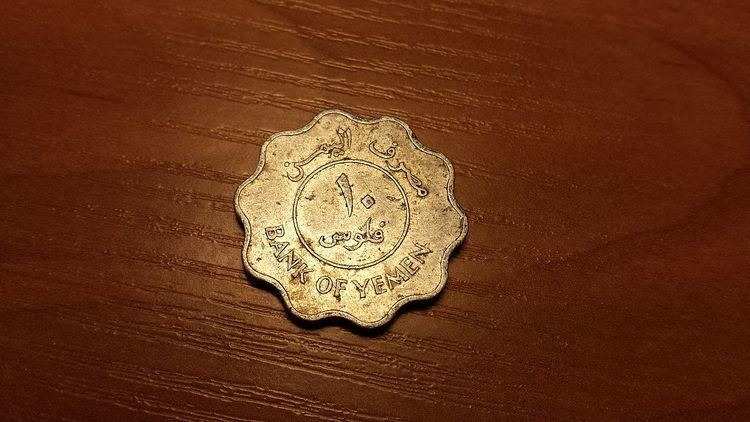Code YDD User(s) South Yemen
Yemen | 1/1000 fils Central bank Bank of Yemen | |
 | ||
Banknotes 500 fils, 1, 5, 10 dinars Coins 2½, 5, 10, 50, 100, 250 fils | ||
The dinar (Arabic: دينار) (Arabic: مؤسسة النقد للجنوب العربي) was the currency of South Arabia and then South Yemen between 1965 and 1990. It was subdivided into 1000 fils (فلس). After Yemen's monetary unification on 1 July 1990, it was one of the two official currencies used in Yemen Republic until 11 June 1996.
Contents
History
The dinar was introduced in 1965 as the South Arabian Dinar, replacing the East African shilling at a rate of 1 dinar = 20 shillings, thus setting the dinar initially equal to the British pound. It was renamed the South Yemeni dinar after the Aden Protectorate became independent in 1967 as the South Yemen. The South Yemeni dinar was replaced by the rial following unification with North Yemen. The exchange rate was 1 dinar = 26 rial. Dinar banknotes remained legal tender until 1996.
For a wider history surrounding currency in the region, see The History of British Currency in the Middle East.
Coins
In 1965, coins (dated 1964) were introduced for South Arabia in denominations of 1, 5, 25 and 50 fils. The 1 fils was struck in aluminium, the 5 fils in bronze and the higher two denominations in cupro-nickel. In 1971, coins were issued in the name of "Democratic Yemen", changing to the "People's democratic Republic of Yemen" in 1973. That year, aluminium 2½ fils were introduced, followed by aluminium 10 fils and cupro-nickel 100 and 250 fils in 1981. The 10 fils was scalloped shaped whilst the 100 fils was octagonal.
